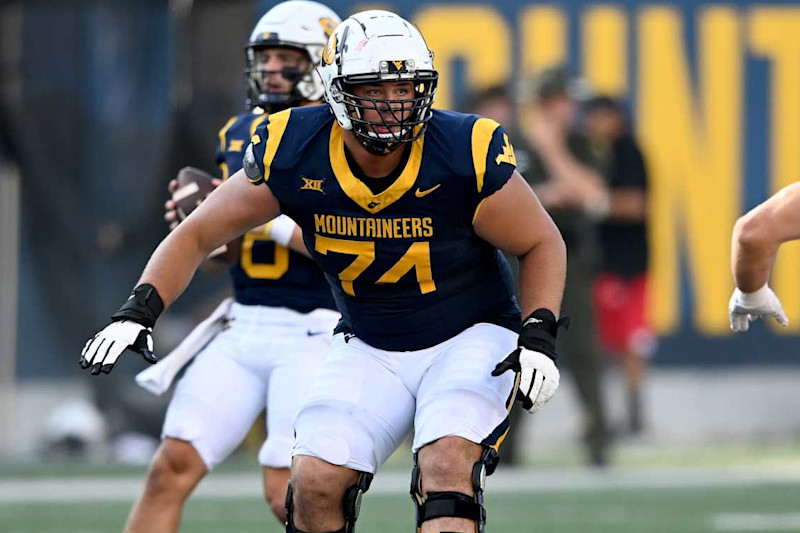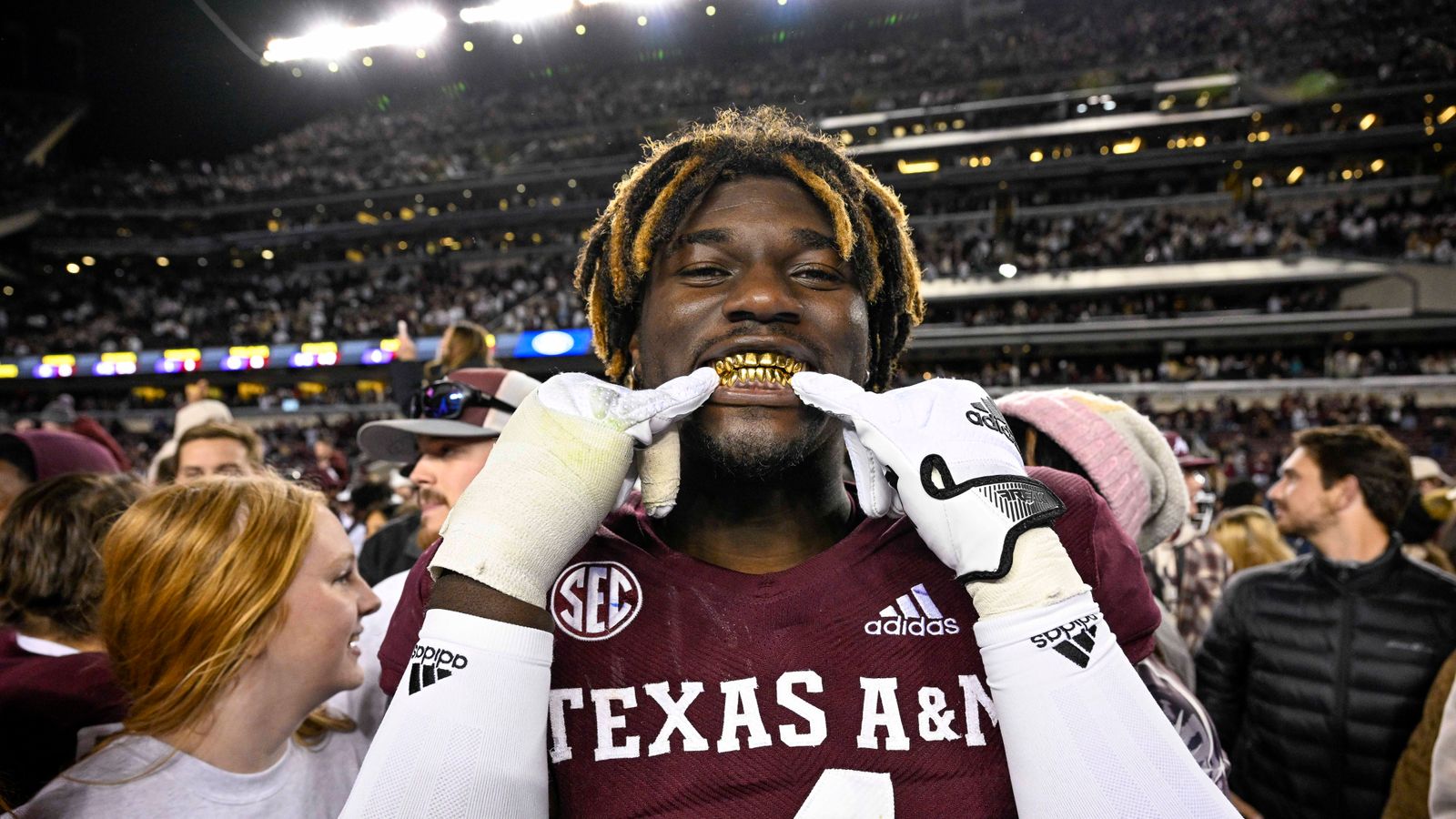
Yesterday I ran through some of the defensive line options for the Seahawks and looked at pressures and pass-rush win percentage. Given Seattle’s obvious need on the offensive line — with an apparent keen desire to fix their running game — I also wanted to look at some data for the offensive linemen in the draft.
PFF grades are highly debatable, let’s acknowledge that to begin with. But it’s the only accessible data to judge individual run-blocking. PFF separates grades for zone blocking and gap blocking, which feels useful at the moment. Klint Kubiak and Grant Udinski have backgrounds in the zone-blocking world, while Detroit, where Hank Fraley coaches, mix in both schemes.
It’s interesting that the grades for zone-blocking across the board were much higher. I’m not sure why that would be — maybe it’s easier? But here are the results for both schemes:
Run blocking PFF grades (zone)
Wyatt Milum — 90.3
Armand Membou — 87.5
Jack Nelson — 86.4
Grey Zabel — 84.8
Cameron Williams — 84.0
Marcus Mbow — 81.6
Kelvin Banks Jr — 81.5
Connor Colby — 81.3
Jared Wilson — 78.9
Aireontae Ersery — 77.3
Dylan Fairchild — 77.2
Will Campbell — 74.5
Josh Conerly Jr — 73.7
Donovan Jackson — 73.2
Jonah Savaiinaea — 69.5
Seth McLaughlin — 66.4
Josh Simmons — 66.2
Tyler Booker — 65.5
Emery Jones — 64.0
Jake Majors — 63.8
Run blocking PFF grades (gap)
Wyatt Milum — 78.9
Grey Zabel — 78.7
Armand Membou — 76.7
Josh Simmons — 71.6
Kelvin Banks Jr — 70.8
Donovan Jackson — 66.8
Josh Conerly Jr — 65.6
Jake Majors — 65.5
Seth McLaughlin — 65.5
Jared Wilson — 65.2
Will Campbell — 64.0
Tyler Booker — 63.0
Aireontae Ersery — 62.9
Marcus Mbow — 62.6
Emery Jones — 61.7
Dylan Fairchild — 60.3
Jack Nelson — 57.2
Jonah Savaiinaea — 53.2
Cameron Williams — 52.3
Connor Colby — 47.3
Some teams work quite closely with PFF and use their data. Others, reportedly, are creating their own similar systems. It has at least been speculated in the past that the Seahawks place some faith in data like this. For example, they drafted Byron Murphy who easily led college football in pass-rush win percentage in 2023. They also signed Tyrell Dodson, a highly graded linebacker according to PFF.
That doesn’t mean they’re going to draft someone just because they grade well in the lists above. However, they might use the information as part of the process.
The thing that stands out to me is Wyatt Milum, Grey Zabel and Armand Membou all grade well in both blocking schemes. If they appoint a coach wanting to mix between zone and gap — that could come in useful. This also aligns with what the tape shows. Milum, Zabel and Membou, I’d argue, are the most physically aggressive offensive linemen I’ve studied in this class. I think Tyler Booker also belongs in that conversation — but his grading, surprisingly, was pretty average in both systems.
Mel Kiper mocked Membou to Seattle at #18 in his first mock draft this week. I think he’s unlikely to go that early, unless he performs brilliantly at the combine. That isn’t out of the question. Reportedly he runs a 1.63 10-yard split and has clocked 20mph on the GPS. Measurables matter too (and he’s too short to stick at tackle) but great testing could propel him into consideration.
Regardless, I would expect all three of Milum, Zabel and Membou to go between #18-60 — a range that includes Seattle’s first two picks. I really want the Seahawks to add highly aggressive people-movers to their line. These three do it well, while retaining control. They should be on our radar.
Now let’s look at pass-protection:
Pressures conceded
Cameron Williams — 26
Emery Jones — 25
Marcus Mbow — 25
Donovan Jackson — 19 (tackle)
Will Campbell — 18
Jonah Savaiinaea —15
Jake Majors — 15
Aireontae Ersery — 13
Kelvin Banks Jr — 10
Connor Colby — 10
Tyler Booker — 10
Armand Membou — 9
Josh Conerly Jr — 9
Dylan Fairchild — 9
Jack Nelson — 9
Grey Zabel — 7
Seth McLaughlin — 7
Wyatt Milum — 6
Jared Wilson — 5
Josh Simmons — 1 (missed time)
Sacks conceded
Cameron Williams — 5
Jonah Savaiinaea — 4
Marcus Mbow — 3
Connor Colby — 2
Donovan Jackson — 2 (tackle)
Will Campbell — 2
Aireontae Ersery — 1
Kelvin Banks Jr — 1
Josh Conerly Jr — 1
Jack Nelson — 1
Grey Zabel — 1
Emery Jones — 1
Dylan Fairchild — 1
Jake Majors — 0
Armand Membou — 0
Wyatt Milum — 0
Tyler Booker — 0
Seth McLaughlin — 0
Jared Wilson — 0
Josh Simmons — 0 (missed time)
I cannot make this clear enough — I want nothing to do with Cameron Williams. Technically he is a mess. He has limited college starts and it showed on tape. At times he looked lost in pass-pro, a genuine liability. He has great size and looks the part. He’s a massive project though and shouldn’t be anywhere near the first round like some high-profile mocks have been suggesting. Look at the numbers above.
On a positive note, the three players who excelled in their run blocking again show well here. Milum and Membou didn’t give up a single sack despite playing tackle (with Membou competing in the SEC) while Zabel gave up just one sack. All three performed well in terms of pressures conceded too.
These numbers are a key reason why I think Booker is a strong option for the Seahawks. His size and aggression is tailor-made for strong run-blocking, so you can work to improve his grading there. Yet despite playing on a terrible Alabama O-line (he was the only consistent performer) he still gave up zero sacks and only 10 pressures.
The numbers also speak to why I’m a little bit confused why Will Campbell, who didn’t play well in 2024, is mocked so highly. If it’s purely do to expectations over his testing, fine. Yet we’re talking about a short-armed tackle who probably has to move inside, who had a fairly bad final season at LSU. His overall grade per PFF (72.2) for the season put him at #117 among offensive tackles in college. His testing, which is expected to be great, could be the only reason for taking him in the top-15 like many are projecting.
These numbers don’t say much for Jonah Savaiinaea or Marcus Mbow either. I’d take Donovan Jackson’s stats with a pinch of salt. Moving out to left tackle was a thankless task for a natural guard and he did a good job in relief. When he was playing at left guard, he gave up three pressures and zero sacks in four games.
If the Seahawks do go with a zone-blocking scheme under their new OC, Wisconsin’s Jack Nelson has good stats in that system and his pass-pro numbers are excellent too. He’s one of the more underrated linemen in the draft and can play tackle or guard. If they want a quality zone-blocking center, Georgia’s Jared Wilson would be a worthwhile target. Likewise, Dylan Fairchild looks like a great left guard option in a zone system per these numbers.
For what it’s worth, potential free agent target Drew Dalman (C, Atlanta) gave up two sacks and 10 pressures in 2024. His run-blocking grades were 82.3 in zone (196 snaps) and 65.0 in gap (52 snaps). Ryan Kelly graded 57.8 in zone (127 snaps) and 72.5 in gap (135 snaps) while giving up one sack and 11 pressures. They are two contrasting options.
At guard, Trey Smith graded an 83.0 in zone (220 snaps) and 69.9 in gap (140 snaps). He gave up a surprisingly high 30 pressures in 2024, although he conceded zero sacks. Mekhi Becton graded 76.4 in zone (248) and 63.2 in gap (200 snaps). These are unexpected results given his size. He’s given up 32 pressures and five sacks this season. It’s frustrating to see John Simpson and Dominick Puni both grading well in run-blocking — two players who were available to the Seahawks last off-season and were much discussed.
Possible project Ben Cleveland in Baltimore graded a 71.0 for his 20 gap-scheme snaps. If they want size and power up front, he might be a cheap roll of the dice.
Another surprising note — Charles Cross performed far better in gap (84.3 grade on 160 snaps) than he did in zone (70.2 grade on 168 snaps). However, Abe Lucas was better in zone (72.2 grade on 50 snaps) than gap (56.1 grade on 82 snaps). Part of the problem Seattle has had, in my opinion, is the odd mix in styles of their offensive linemen. Charles Cross, for example, is not an obvious line-mate for Anthony Bradford. Equally, Bradford is not an obvious fit next to the smaller centers they’ve been signing and drafting. They need clarity on what they want to be and the personnel needed to execute their chosen system — even if it means a healthy balance between zone and gap.
Finally, can anyone explain the video below to me? These two appearances from Daniel Jeremiah, discussing Will Howard, were a day apart — on the Brock & Salk show on Wednesday, then the Pat McAfee show on Thursday:




/cdn.vox-cdn.com/uploads/chorus_image/image/73047412/1393894393.0.jpg)
